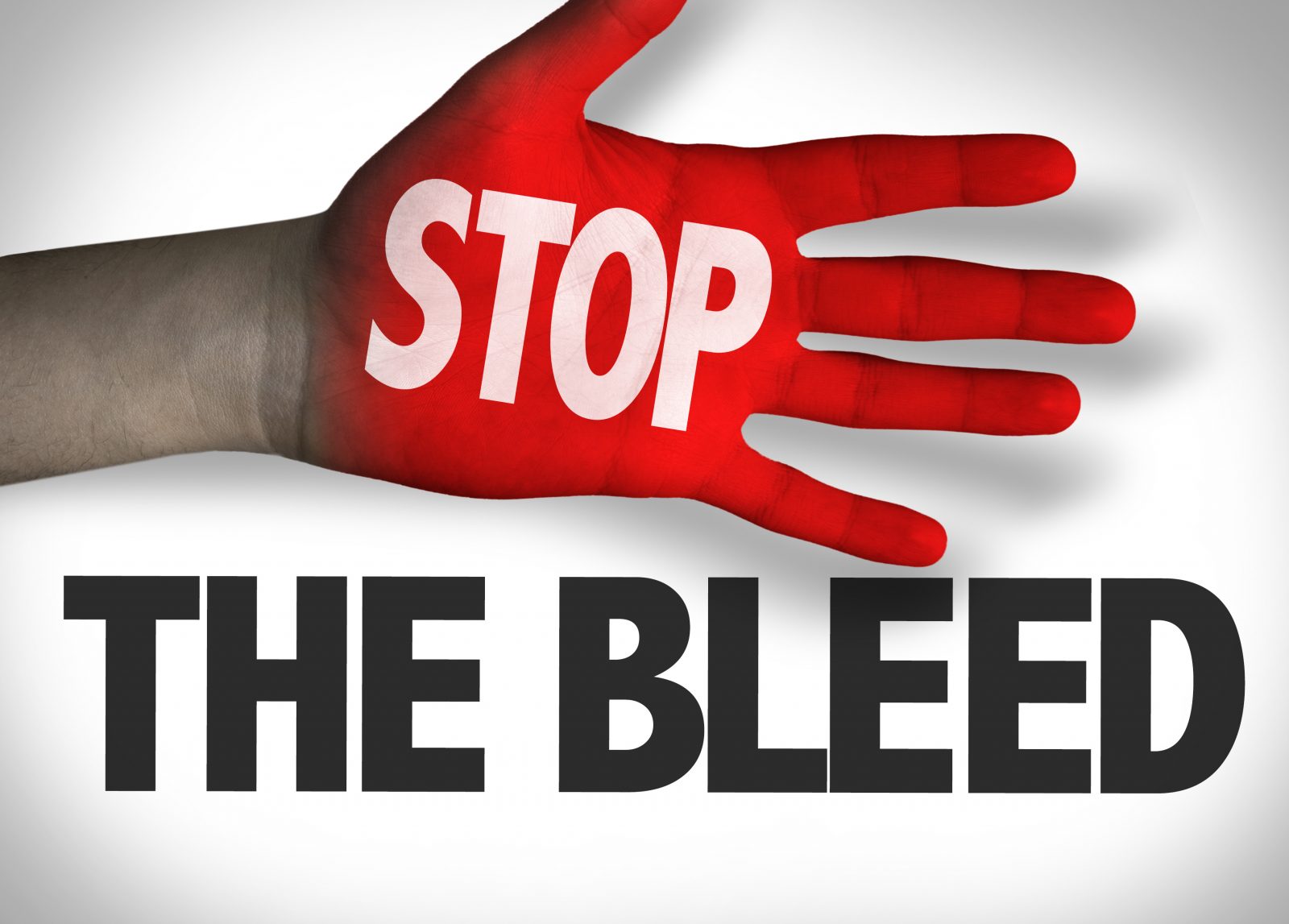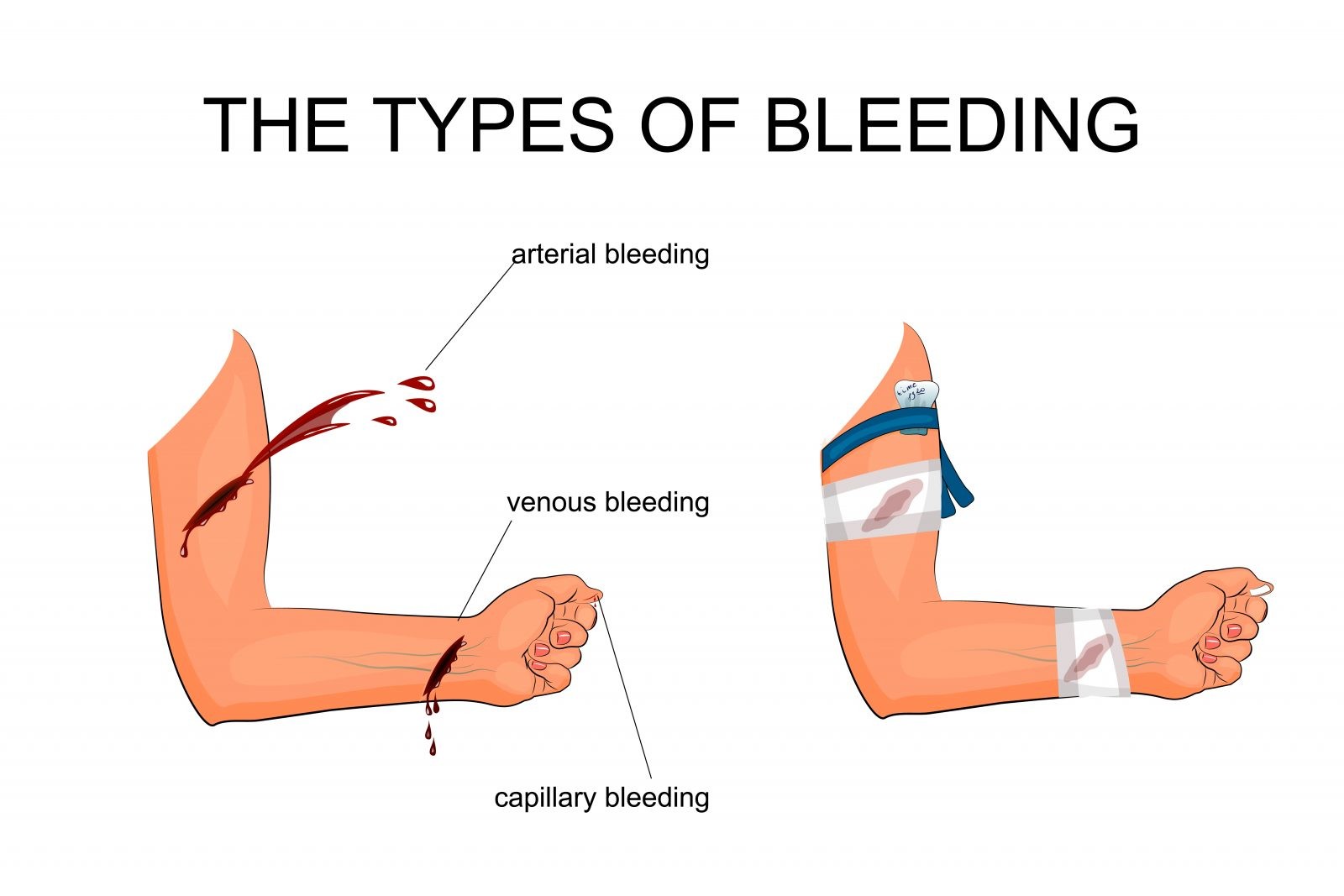3 types of bleeding and how to control them…

May is National “Stop the Bleed Month” Here are some important tips to share
External blood is when blood leaves the body through any type of wound. First aid responders should be competent at dealing with major blood loss. There are broadly three different types of bleeding: arterial, venous and capillary.
How much blood do we have?
The average adult human as anywhere between 8 and 12 pints of blood depending on their body size.
Remember that children have less blood than adults, and as such cannot afford to lose the same amount – a baby only has around 1 pint of blood.

Arterial
With this type of bleeding, the blood is typically bright red to yellowish in color, due to the high degree of oxygenation. A wound to a major artery could result in blood ‘spurting’ in time with the heartbeat, several meters and the blood volume will rapidly reduce.
Venous
This blood is flowing from a damaged vein. As a result, it is blackish in color (due to the lack of oxygen it transports) and flows in a steady manner. Caution is still indicated: while the blood loss may not be arterial, it can still be quite substantial, and can occur with surprising speed without intervention.
Capillary
Bleeding from capillaries occurs in all wounds. Although the flow may appear fast at first, blood loss is usually slight and is easily controlled. Bleeding from a capillary could be described as a ‘trickle’ of blood.
The key first aid treatment for all of these types of bleeding is direct pressure over the wound.
Call Now to speak with a First Aid/CPR Training Specialist
Shop Now for First Aid Products
